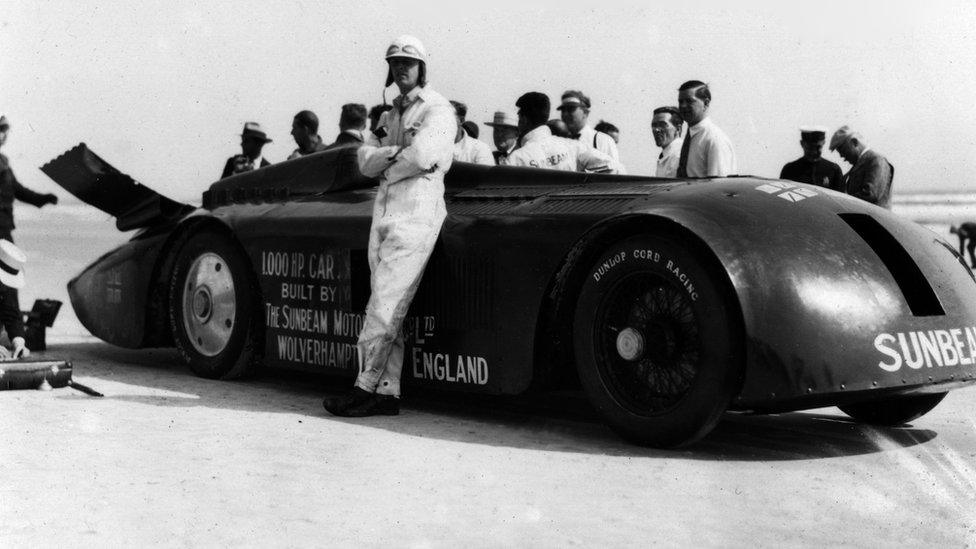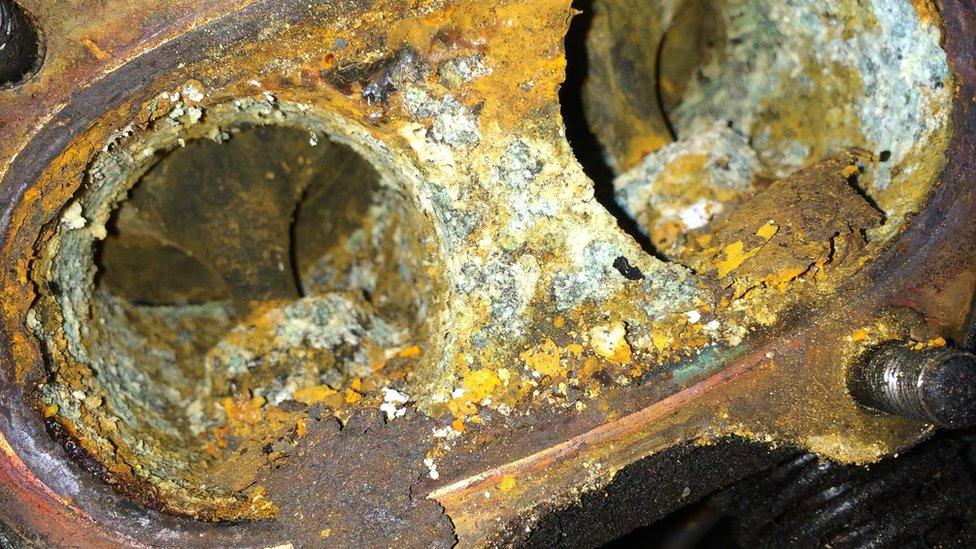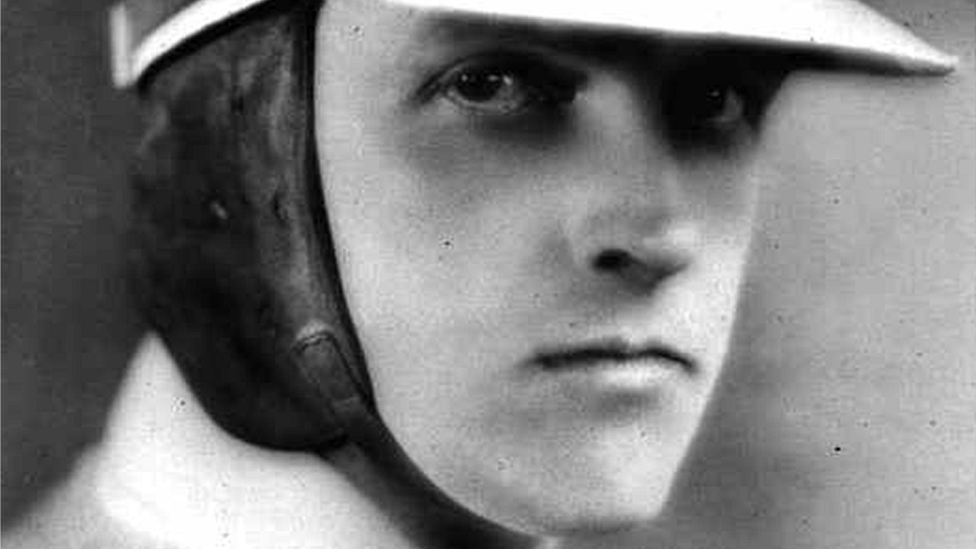Land speed record engine restored at Beaulieu museum
- Published
Sunbeam 1,000hp breaks the 200mph land speed barrier (footage courtesy of British Pathe)
An engine which helped to break the 200mph land speed barrier is being restored to mark the event's 90th anniversary.
The Sunbeam 1,000hp car, driven by Major Henry Segrave, set the record on 29 March 1927 at Daytona Beach, Florida.
Its rear engine is being rebuilt by the National Motor Museum in Beaulieu, Hampshire.
The museum is considering restoring the entire car to full working order.

Major Henry Segrave became the first driver to top 200mph
The vehicle, built at Sunbeam's Wolverhampton factory, was fitted with two V12 Sunbeam Matabele aero engines, each delivering 435 brake horsepower (bhp).
An estimated crowd of 30,000 spectators watched the car, affectionately named 'The Slug', set the world land speed record in 1927 by completing two runs on the flat sand.
On the first run, Major Segrave drove into the sea to slow down after the vehicle skidded in strong winds.
His average top speed of 203.8mph (328km/h) over the two runs made him the first driver ever to break 200mph.

It took experts 18 months to free off and strip the rear engine using solvents and gentle heat
Museum project manager Doug Hill said the engines were found to be nearly complete when they were inspected in 2015.
But he said they were "virtually glued solid" by oil which had been left inside them.
It took experts 18 months to free off and strip the rear engine using heavy detergents and penetrating oils.
Engineer Ian Stanfield said the engines were also "corroding from the inside out" and would have been impossible to repair within ten years.
The museum said the work would be completed later this year, when the engine would be set running in a static frame.
It said it hoped to restore the front engine in due course and make a decision about restoring the entire vehicle.

The museum said the engine was so corroded it would have been impossible to repair within ten years
- Published16 March 2016
